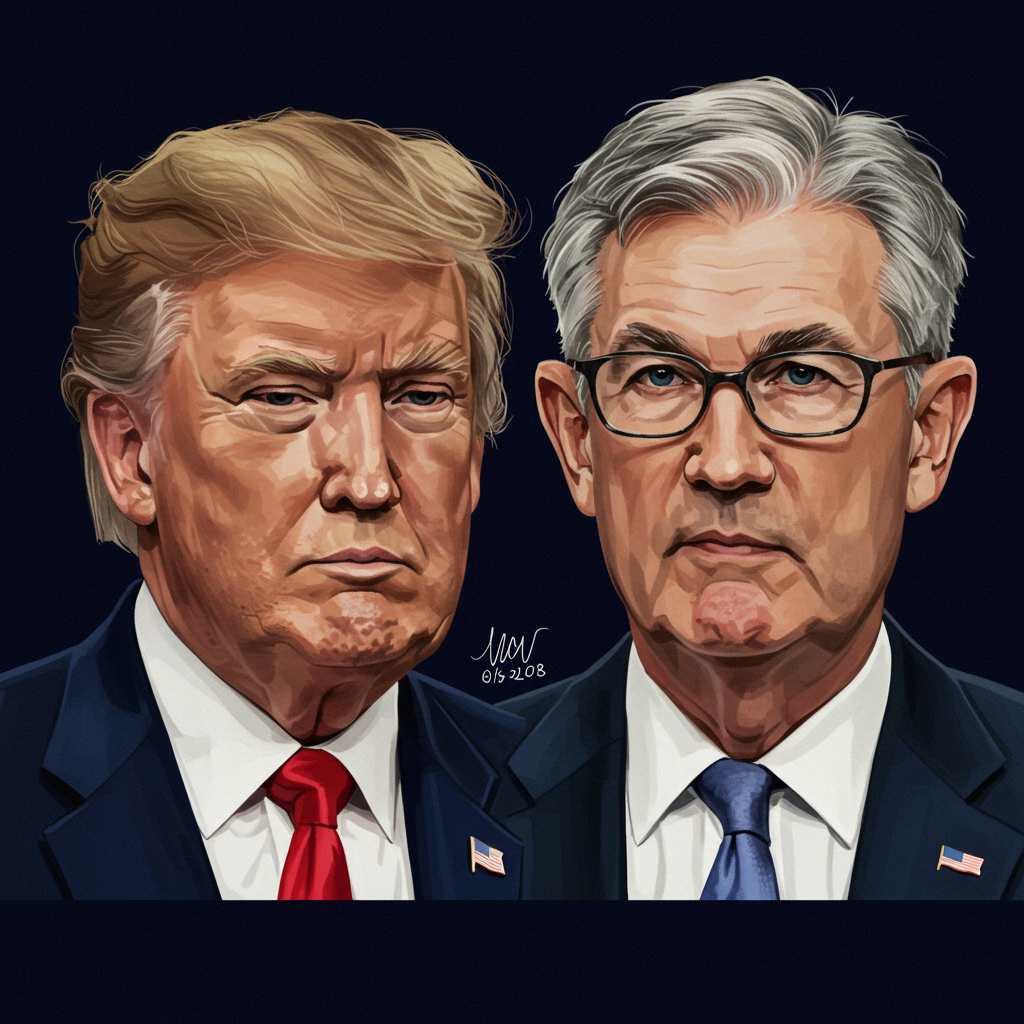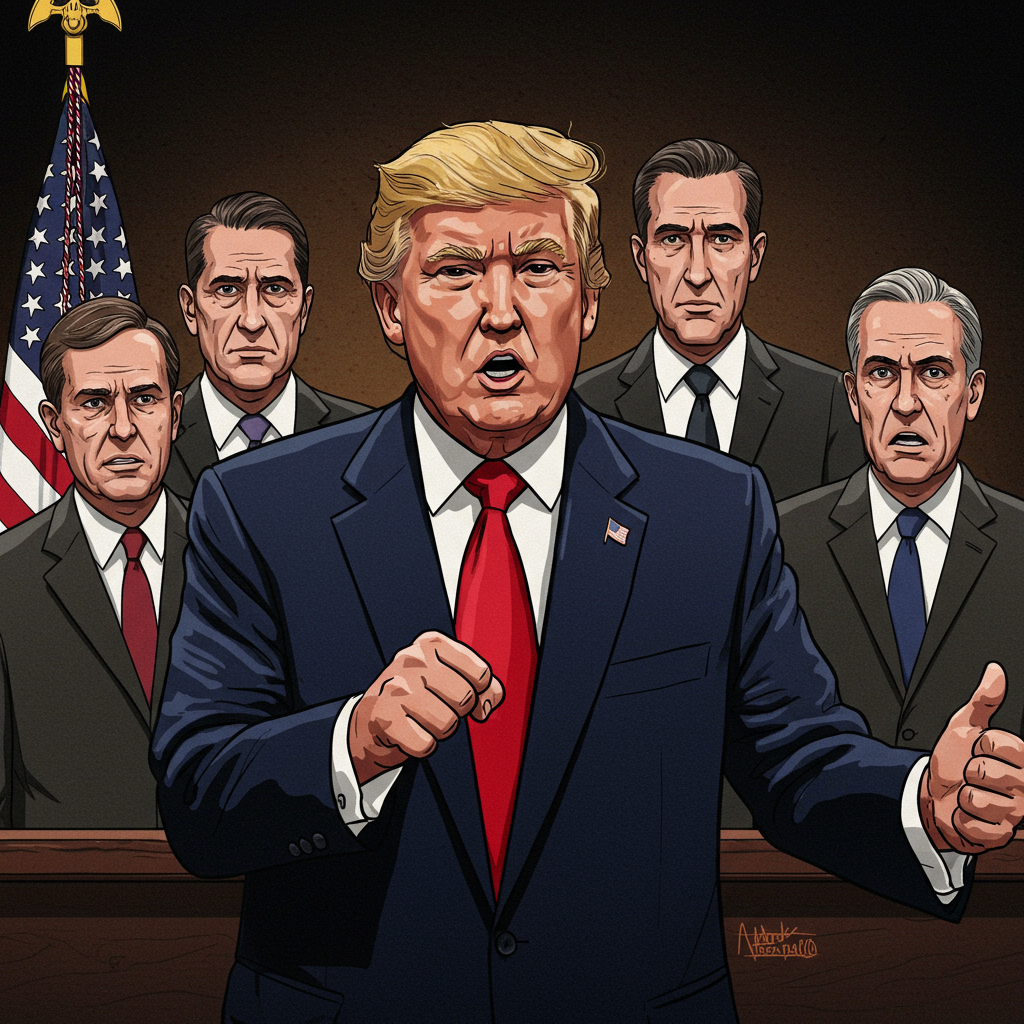U.S. Treasury yields edged lower on Thursday amidst persistent concerns that President Donald Trump’s escalating criticism of Federal Reserve Chairman Jerome Powell could threaten the central bank’s independence and lead to an early replacement. This uncertainty has added another layer of volatility to financial markets already navigating complex trade policies.
On Thursday, the benchmark 10-year Treasury yield fell 3.8 basis points to 4.255%. The shorter-term 2-year yield saw a more significant drop, down over 6 basis points to 3.711%, while the 30-year yield shed 2.1 basis points, settling at 4.8321%. (For reference, one basis point equals 0.01%, and yields and bond prices typically move in opposite directions.)
The Core Conflict: Trump vs. Powell
The recent pressure on yields stems directly from a deepening public rift between President Trump and Fed Chair Powell. Powell has steadfastly maintained the Federal Reserve’s primary goal is to keep inflation in check, a stance that has drawn harsh rebuke from Trump. The President has aggressively pushed for immediate interest rate cuts to stimulate the economy, often comparing the U.S. central bank unfavorably to others like the European Central Bank.
Trump’s criticism has been notably sharp, publicly calling Powell “terrible,” a “major loser,” and “Mr. Too Late.” Reports, citing sources familiar with the matter, suggest President Trump is considering naming Powell’s successor well before his term officially ends in May 2026, potentially as early as September or October. Trump himself has stated he knows “within three or four people who I’m going to pick.”
Wider Market Impact and Independence Concerns
This tension around the Fed’s leadership and independence, combined with anxieties over ongoing trade tensions, has triggered broad market jitters. Earlier in the week, major U.S. stock indexes experienced a significant sell-off, with the Dow Jones Industrial Average, S&P 500, and Nasdaq Composite all falling by more than 2%. This downturn reflected weakening confidence among global investors in the safety of U.S. assets.
The U.S. dollar has also seen substantial weakness, with the dollar index falling to levels not seen in years against other major currencies. Some analysts view this dollar decline and a corresponding rise in assets like gold and Bitcoin as potential signs of “de-dollarization” and investors seeking alternative safe havens away from the U.S. Amidst this volatility, traditional safe-haven assets like gold have surged to new record highs.
A central concern for financial leaders and market participants is the potential politicization of the Federal Reserve. The Fed Chair is appointed by the President but is designed to operate with independence to make monetary policy decisions based on economic data, free from political pressure. Experts warn that any perceived attempt to remove the Fed Chair prematurely could severely disrupt markets and undermine the Fed’s credibility, potentially having long-term negative consequences for the dollar and the global financial system. While legal experts and Powell himself assert the President cannot simply fire the Fed Chair before their term expires unless “for cause,” the public pressure is fueling investor unease.
Economic Data and Future Outlook
Adding to the economic picture, recent data showed U.S. jobless claims fell to 236,000 for the week ending June 21, coming in below economist forecasts. Markets are now looking ahead to Friday’s release of the May personal consumption expenditures (PCE) index, the inflation gauge most closely watched by the Fed. Powell recently projected the PCE measure is expected to rise to 2.3%, with the core PCE (excluding food and energy) ticking up to 2.6%, figures higher than those seen the previous month.
The impact of tariffs, a key point of contention between Trump and some economic advisors, also remains a concern. Powell has noted that escalating tariffs could simultaneously fuel inflation and hinder economic growth, creating a complex environment for the central bank’s policy decisions. The lack of clarity on trade deals and the threat of high tariffs continue to weigh on the economic outlook.
Ultimately, the dip in Treasury yields on Thursday is a signal of how sensitive markets are to political dynamics affecting the Federal Reserve and the broader economic uncertainties driven by trade policies and questions surrounding the central bank’s crucial independence.




